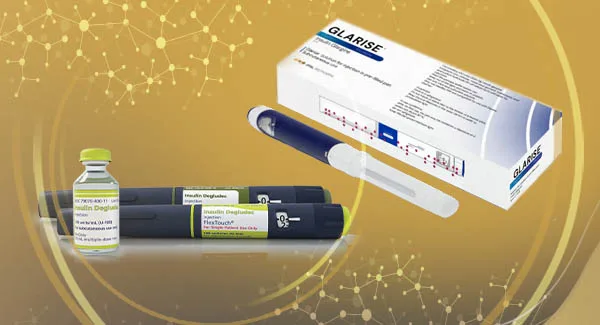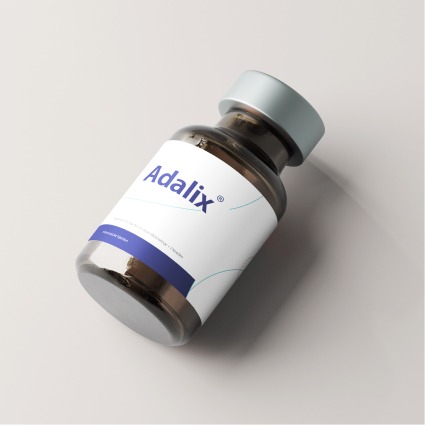Abstract
Type 1 diabetes (T1D) management requires a delicate balance between maintaining optimal glycemic control and minimizing the risk of hypoglycemia. Basal insulin therapies, such as insulin degludec (IDeg) and insulin glargine U100 (IGlar-100), are widely used to provide stable blood glucose levels. This study compares glucose metrics recorded during continuous glucose monitoring (CGM) in people with T1D and a history of recurrent nocturnal severe hypoglycemia. The findings highlight key differences in glycemic stability, nocturnal hypoglycemia, and overall treatment outcomes between IDeg and IGlar-100.
Introduction
T1D is a chronic autoimmune disease characterized by insulin deficiency, necessitating lifelong exogenous insulin therapy. Long-acting basal insulins are crucial in maintaining glucose homeostasis, preventing hyperglycemia and hypoglycemia. Severe nocturnal hypoglycemia remains a significant concern in T1D management, as it increases morbidity, mortality risk, and negatively impacts quality of life. IDeg and IGlar-100 are two basal insulin analogs designed to control prolonged and stable glucose. This article examines the comparative efficacy of these two insulins in individuals with recurrent nocturnal severe hypoglycemia.
Methods
This study was a multicenter, two-year, randomized crossover trial involving 149 adults with T1D. Inclusion criteria required participants to have experienced at least one episode of severe nocturnal hypoglycemia within the past two years. Participants were randomized 1:1 to receive either IDeg or IGlar-100, with an optional six-day blinded CGM assessment performed twice during each treatment period. The key CGM-derived metrics evaluated included:
CGM Metrics Assessed
– Time-in-Range (TIR) (70-180 mg/dL)
– Time-Below-Range (TBR) (Level 1: 54-69 mg/dL; Level 2: <54 mg/dL)
– Time-Above-Range (TAR) (Level 1: 181-250 mg/dL; Level 2: >250 mg/dL)
– Coefficient of Variation (CV), which assesses glycemic variability.
Results
Of 149 enrolled participants, 74 completed CGM monitoring and were included in the final analysis. The most notable differences in glucose control were observed during nighttime hours (23:00–06:59). The comparative findings between IDeg and IGlar-100 are summarized below.
Time-in-Range (TIR)
– IGlar-100: 54.0%
– IDeg: 49.0%
– Estimated Treatment Difference (ETD): -4.6% (95% Confidence Interval [CI]: -9.1, -0.0; P = .049)
IGlar-100 demonstrated a significantly higher percentage of time within the target glucose range than IDeg, particularly during nighttime. This suggests that IGlar-100 provides more consistent basal insulin coverage overnight.
Time-Below-Range (TBR) – Nocturnal Hypoglycemia
– TBR Level 1 (54-69 mg/dL):
– IGlar-100: Higher incidence of TBR
– IDeg: Lower TBR (ETD: -1.7% [95% CI: -2.9, -0.5], P < .05)
– TBR Level 2 (<54 mg/dL – Severe Hypoglycemia):
– IGlar-100: Higher incidence of severe nocturnal hypoglycemia
– IDeg: Lower severe hypoglycemia (ETD: -1.3% [95% CI: -2.1, -0.5], P = .001)
These results indicate that IDeg is associated with a lower risk of nocturnal hypoglycemia, making it potentially advantageous for individuals prone to severe nighttime hypoglycemia episodes.
Time-Above-Range (TAR) – Hyperglycemia Risk
– TAR Level 1 (181-250 mg/dL):
– IDeg: Higher TAR compared to IGlar-100 (ETD: 4.0% [95% CI: 0.8, 7.3], P < .05)
– TAR Level 2 (>250 mg/dL):
– IDeg: Higher TAR compared to IGlar-100 (ETD: 4.0% [95% CI: 0.8, 7.2], P < .05)
These findings suggest that although IDeg reduces the incidence of nocturnal hypoglycemia, it does so at the expense of increased hyperglycemia risk, particularly overnight.
Glycemic Variability (CV)
– IGlar-100: Higher CV
– IDeg: Lower CV (ETD: -3.4% [95% CI: -5.6, -1.2], P < .05)
IDeg demonstrated significantly lower glycemic variability than IGlar-100, indicating more stable glucose levels throughout the night.
Discussion
The results highlight key differences between IDeg and IGlar-100 in the management of T1D, particularly in individuals prone to nocturnal severe hypoglycemia. The trade-off between reducing hypoglycemia and increasing hyperglycemia is a crucial factor in clinical decision-making.
– IDeg demonstrated superior nocturnal hypoglycemia prevention by reducing both level 1 and level 2 TBR values.
– IGlar-100 maintained better TIR and was associated with a lower incidence of hyperglycemia.
– IDeg resulted in lower glycemic variability, which may contribute to a smoother insulin profile.
These findings align with prior studies suggesting that IDeg’s ultra-long action duration contributes to a flatter pharmacokinetic and pharmacodynamic profile, reducing glucose fluctuations. However, the increase in TAR with IDeg suggests that its prolonged action might lead to higher overnight glucose levels, requiring careful titration and monitoring.
Clinical Implications
The choice between IDeg and IGlar-100 should be individualized based on patient-specific needs.
– For patients with a history of nocturnal hypoglycemia, IDeg may be the preferred option due to its lower risk of severe hypoglycemia.
– For patients who prioritize staying in range and minimizing hyperglycemia, IGlar-100 appears to provide better glycemic control.
– For those with high glucose variability, IDeg might offer more stability over time.
Further research is warranted to explore whether adjustments in dosing strategies can mitigate the hyperglycemia risk associated with IDeg while preserving its benefits in hypoglycemia prevention.
Conclusion
This study provides valuable insights into the comparative efficacy of insulin degludec and insulin glargine U100 in T1D patients with recurrent nocturnal hypoglycemia. While IDeg offers a significant reduction in nocturnal hypoglycemia, it does so at the cost of increased hyperglycemia episodes. Conversely, IGlar-100 maintains better TIR and limits hyperglycemia risk but may pose a higher hypoglycemia risk. The choice of basal insulin should be tailored to the patient’s risk profile and glycemic management goals.
-
Stay updated with the latest insights and research on biosimilars by visiting Opal Bio Pharma’s official website.
References
https://pubmed.ncbi.nlm.nih.gov/37671755/

